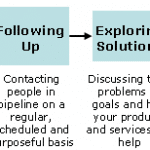Appearance, quality of life, and health-driven concerns over excess weight provide momentum for healthy lifestyle businesses, including wellness coaching, weight loss and weight management programs. These businesses often combine physical fitness, healthful eating, mind/body practices with elements of traditional, alternative, holistic and complementary medicine. But what drives business success for these companies?
Creative and innovative approaches programs spark this thriving sector of the wellness industry, whether online or in a traditional “brick-and-mortar” setting.
Healthy lifestyle businesses that build a strong sense of community among clients can find revenue opportunities even among participants who have reached the maintenance stage.
Check your healthy lifestyle or weight management business against this checklist to see if you’re doing everything you can.
1. Tap increasing awareness of health effects
- Research continues to drive home the importance of maintaining a desirable weight and losing excess weight.
- New research studies reinforce almost daily the risks of excess weight–cardiovascular disease, diabetes, some cancers, and more.
- Weight matters for every life stage. Parents want to teach healthy habits to their kids. And as overweight adults age, they first resent and later fear the lifestyle compromises resulting from excess weight.
2. Provide a full range of services
- Your most profitable customers will be the ones you can serve throughout every stage of weight loss – tentative exploration of ways to lose weight, the initial decision to adopt healthier habits, early weight loss, plateauing, backsliding, and maintenance.
- Keep these customers actively contributing to your bottom line by carefully selecting the right products and services to match their level of accomplishment.
- Your most loyal customers are your most profitable customers. Offer programs, products, and services tailored to their evolving lifestyles.
3. “Healthy at any size” trend works in your favor
- Research shows that overweight individuals can improve their health through fitness (“fit at any size”), nutrition, and other healthy living principles. This is true even with little to no actual weight loss.
- Consider shifting from a narrow “diet” focus to a more comprehensive focus on healthy living.
- We know that most people find it difficult to reach and maintain their weight goals. The “healthy at any size” approach offers a way to retain customers and provide valuable services to clients even when they have difficulty reaching their ultimate weight loss goal.
4. Weight management is not just for women
- Most weight management and weight loss businesses focus on women.
- Yet statistics tell us that men and children also struggle with weight.
- Per the NHANES study, 62% of adult women are overweight. However, 67% of men are overweight. And 30% of children are overweight or at risk for becoming overweight.
- And non-white Americans, especially women, are also likelier to be overweight.
5. There is no typical weight loss customer
- There is no typical weight loss consumer.
- Some struggle with emotional eating. Others simply need information about balancing calories and activity. Still others need programs for healthy living on the road, or during pregnancy, or while balancing work and family.
- Be sure that your programs, products, and services reflect the needs of the actual customers you hope to win.
- A “bikini body” pitch won’t work for everyone. “The power to amaze” won’t inspire every 45-year-old woman. And you may need varied marketing messages to reach men and women.
6. Anticipate trends but watch out for fads
- It’s tough to steer your business around the wellness fads that pop up daily. Business survival depends on anticipating trends while avoiding short-term fads.
- Stay informed. Listen to customers. Pay attention to what friends and families are talking about.
- Broaden your perspective. Join industry groups. Scan the Internet for new scientific and research findings. Use local sources like the Chamber of Commerce to stay current on major regional demographic and market trends.
7. Think broadly about how to reach your customers
- Consider traditional “brick and mortar” storefronts as well as online presence via the Internet. However, a website is not essential for every wellness business.
- If your business does need web presence, you can start small with a site that simply provides an overview of your business. Ultimately you may want to provide fee-based services through your website.
- Avoid the mass media trap. Radio, TV, and newspaper advertising are not effective for most wellness businesses.
8. Begin by building your brand in your local market
- Building your local brand is the best way to grow and promote your business.
- Start with local market data. Work to create win/win relationships with related businesses.
- Remember, though, to protect the interests of your business. Make sure that you network to businesses whose customer service, business practices, and values are in line with those of your business.
9. Build thrifty and effective day-to-day operations
- Management teams often focus exclusively on customers and products. They neglect the back-office operations that keep things running day-to-day.
- Sometimes they simply don’t find the day-to-day activities as personally satisfying. Sometimes they lack confidence in these areas.
- Financial management, finding and compensating the best employees, making sure that customer service is consistent, effective, and efficient…these activities form the foundation of a healthy and sustainable business.
10. Plan for the inevitable bumps in the road
- Customers aren’t buying. Your last marketing campaign fizzled. A key staff member left. Your management team hasn’t had a vacation in two years. And now, suppliers and employees are starting to wonder.
- You’ve got to figure out how to get your business back on track–and fast.
- Unfortunately, good decisions are rarely made in the heat of the moment.
- Identify worst-case scenarios for your business. Periodically lay out what your business can do to avoid these situations, and how it’ll respond if they arise.




